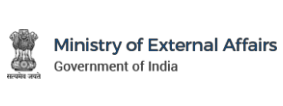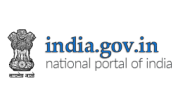Ambassador Ronen Sen's Introductory Remarks at the Annual Luncheon Meeting of the Board of Directors and the Council of the Woodrow Wilson International Center
Washington, DC
February 4, 2008
Mr. and Mrs. Gildenhorn,
Mr. Metzner,
Mr. Lee Hamilton,
Ladies & Gentlemen,
Good afternoon. I thank you all for gracing this home with your presence. This is a gathering of people with highly impressive credentials and records of public service. I am very pleased to have this opportunity of sharing some thoughts with you, and benefiting from my inter-action with you. I will speak to you about India-US relations. After my opening remarks, I will, however, be glad to respond to questions you may have on any issue of interest to you.
In recent years we witnessed a rapid transformation of India-US relations. The visit of President Clinton to India in the year 2000 revitalized these relations, which were thereafter taken to unprecedented heights by President Bush. The launching of the Next Steps in Strategic Partnership (NSSP) process in January 2004 by former Prime Minister Vajpayee and President Bush was emblematic of the new relationship. At his first meeting with President Bush in September 2004, during the UN General Assembly Session, Prime Minister Manmohan Singh had remarked that the relationship was better than ever before, but the “best was yet to come”. These words were indeed prophetic. However, even those present at that meeting, including myself, could not have predicted the sharp and sustained upward trajectory of growth of all facets of our relationship thereafter.
In the wake of the catastrophic tsunami in December 2004, the Indian and US navies cooperated in search, rescue and rehabilitation efforts in the Indian Ocean. Subsequently, an India-US initiative for cooperation in natural disaster management was launched. An Open Skies agreement concluded in April 2005 has resulted in a rapid increase in the number of flights connecting India and the United States. In June 2005 a new Framework of US-India Defence Relationship was concluded between the Defence Ministers of the two countries. The NSSP process was concluded by the time of Prime Minister Manmohan Singh’s official visit to the United States in July 2005. At that time several bold initiatives were launched, including the truly historic initiative to shed the baggage of the past and usher in a new era of civil nuclear energy cooperation between India and the United States. Other important landmarks included the launching of the Economic Dialogue and the CEOs Forum, the Energy Dialogue, the Knowledge Initiative on Agriculture, the Trade Policy Forum – the US had such forums only with EU and China – and several other institutional linkages across a wide spectrum of areas. Many agreements were signed, including one on science and technology. We embarked on closer cooperation in space and other areas of high technology, such as nanotechnology, biotechnology, information technology, and defence industry and R&D. The remarkable progress of such multifaceted cooperation was manifested during the highly successful visit of President Bush to India in March 2006.
Ladies & Gentlemen,
The United States is, and will probably long remain, the pre-eminent global power, in terms of its economic strength, scientific and technological prowess, innovative ability and military might. India is also not only the world’s largest democracy, but one of the world’s fastest growing economies. It is only a question of when India will regain its position as one of the three largest economies in the world. India is a bastion of democracy in the world’s most diverse neighbourhood; it is an anchor of stability in a highly volatile region; and increasingly a locomotive of stable and sustainable regional economic growth. India has historically been, and remains, a benign status quo power without any expansionist desire. It has always projected soft power. India’s growth is also not disruptive or destabilizing. It is propelled not by exports but by domestic demand and investments in one of the fastest growing consumer markets in the world. Ofcourse, the challenges before us are immense. But all these challenges are also opportunities. Whether it is meeting the need for infrastructure or addressing energy deficiency, or modernization of the manufacturing sector, the opportunities for partnership with India are huge. And, as with any healthy partnership, we believe that it will be sustainable because it will be of mutual benefit to us and our partners.
Our bilateral trade with the United States has grown from about $13.5 billion in 2001 to around $40 billion in 2007. Though the balance of merchandize trade is in India’s favour, US exports to India are growing much faster than our exports to the US. From January to November last year, US exports to India grew by about 75.6%, compared to India’s exports to the USA which grew by 10.6%.
It is a similar story in investments. Cumulative FDI from the US to India from 1991 to June 2007 was about $6.2 billion. For calendar year 2007, Indian investments were around $6 billion. We got off to a good start this year. Last week, on January 31st, Tata acquired General Chemical Industrial Products for around $1 billion. The same company hopes to make new investments in the automobile sector. The point I am trying to make is that trade, investments, job creation and so forth is increasingly becoming a two-way street. This is as it should be. These healthy trends will strengthen long-term stakes in the partnership between our two countries.
Ladies & Gentlemen,
India today has centres of excellence in various areas - from science and technology to business administration, from agricultural research to medical advancement. A sound indigenous base has been built in India that enables us not only to absorb high technology but to collaborate in new fields. Companies like Microsoft, IBM, Johnson & Johnson, General Electric and others are setting up R&D centers in India for their global operations. This augurs well for the future.
Our defence cooperation with the United States is becoming an important facet of our relationship. The visit of Defence Secretary Gates to India this month will become the third visit of a US Defence Secretary to India in as many years. Joint exercises between our armed forces are increasing in scale and sophistication. We envisage not just defence procurements from the United States, but co-production, transfer of technologies and even joint R&D. The Defence Policy Group, which met last month in Washington D.C., and its five working groups, is facilitating this process.
The India-US civil nuclear initiative, which has attracted a lot of media attention, is the most outstanding symbol of the new relationship between the two countries as well as of India’s new standing in the world. There are few issues on which there is complete agreement between the United States, Russia, European and other countries. Civil nuclear cooperation with India is one such issue.
It is a fact that cooperation in areas like that of nuclear energy, defence and space can only be based on mutual confidence and trust and a shared long-term strategic vision. I believe that India and the USA can rightly be called strategic partners. We can reconcile our ideals and interests and do not have to sacrifice principles at the altar of expediency. As democracies, we have had, and will continue to have, differences on some issues. We will not be allies, in the traditional military sense. However, we cherish the same values of democracy, rule of law and respect for diversity. Our countries were the initiators and largest contributors to the UN Democracy Fund. We are both founding members of the Community of Democracies. India is adjacent to the world’s largest concentration of terrorists, and the India-US Working Group on Counter-Terrorism was active long before 9/11. India is also adjacent to the world’s largest origins and destinations of proliferation of nuclear weapons and delivery systems. The worst-case national security nightmare for both our countries is nuclear terrorism. India and the US have shared interests in energy security, with reduced dependence on fossil fuels and reasonable and predictable fuel prices.
We both recognize the need for international cooperation in environment protection. We are collaborating in combating pandemics like HIV / AIDS and avian flu. Both countries wish to strengthen international cooperation in preventing trafficking in narcotics and illegal arms, as well as of human beings. On many issues in the international arena we share common approaches even if we do not have identical views.
The relationship between our two countries also has another special dimension of people-to-people contacts provided by the vibrant Indian American community. This 2.5 million strong community is highly educated, innovative, entrepreneurial, and increasingly politically active. It is emerging as a major factor for stronger bilateral ties.
There are more Indian students in the USA than in any other country. India is the biggest consumer of US educational services. There is vast potential of bilateral cooperation in education and health; fields in which our government has enhanced budgetary allocations by 400% and 300% respectively. The positive fallout from such cooperation will be huge.
Thus, in whatever context one views the relationship, I see a bright future for a global partnership between India and the United States.







